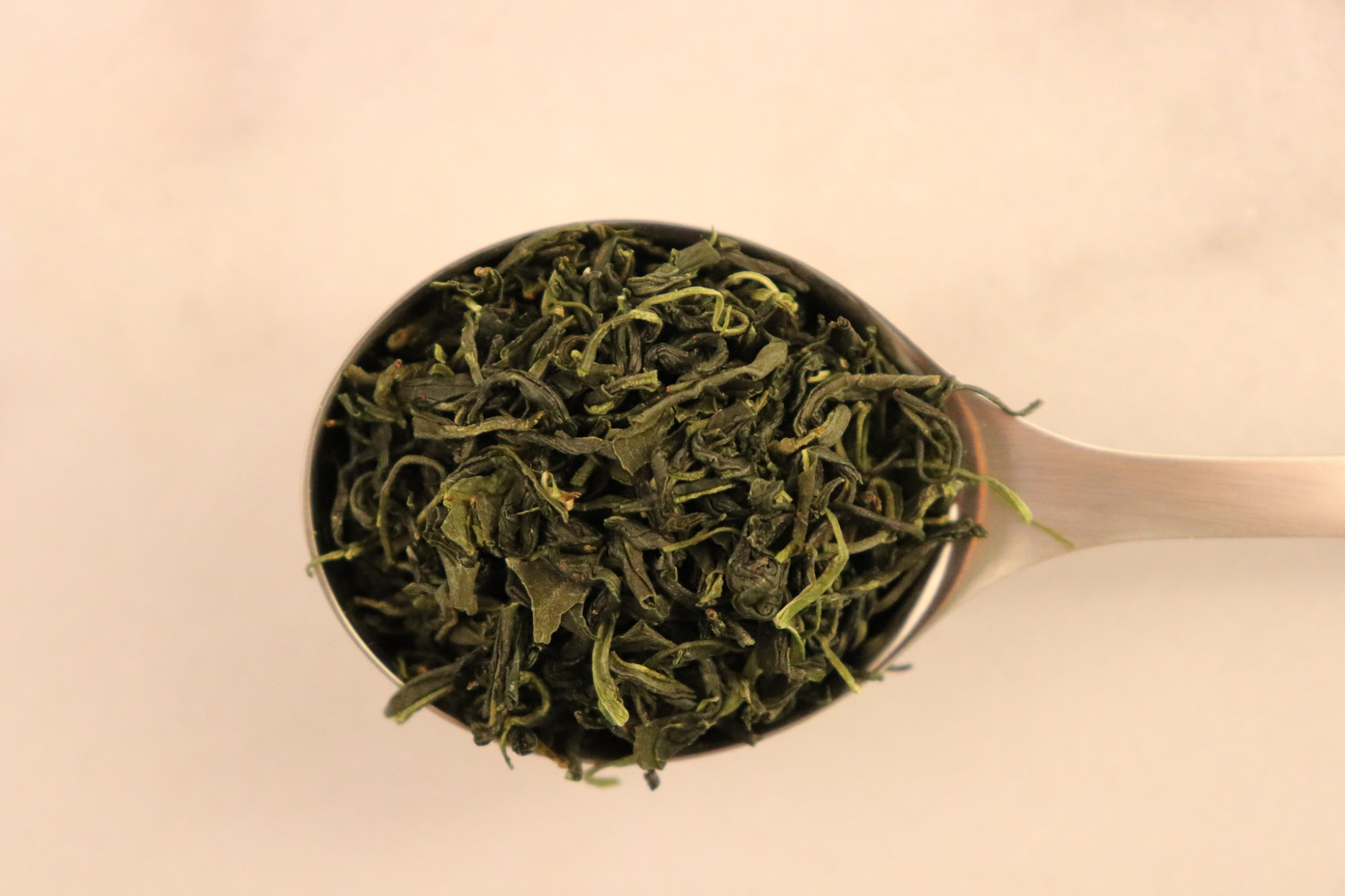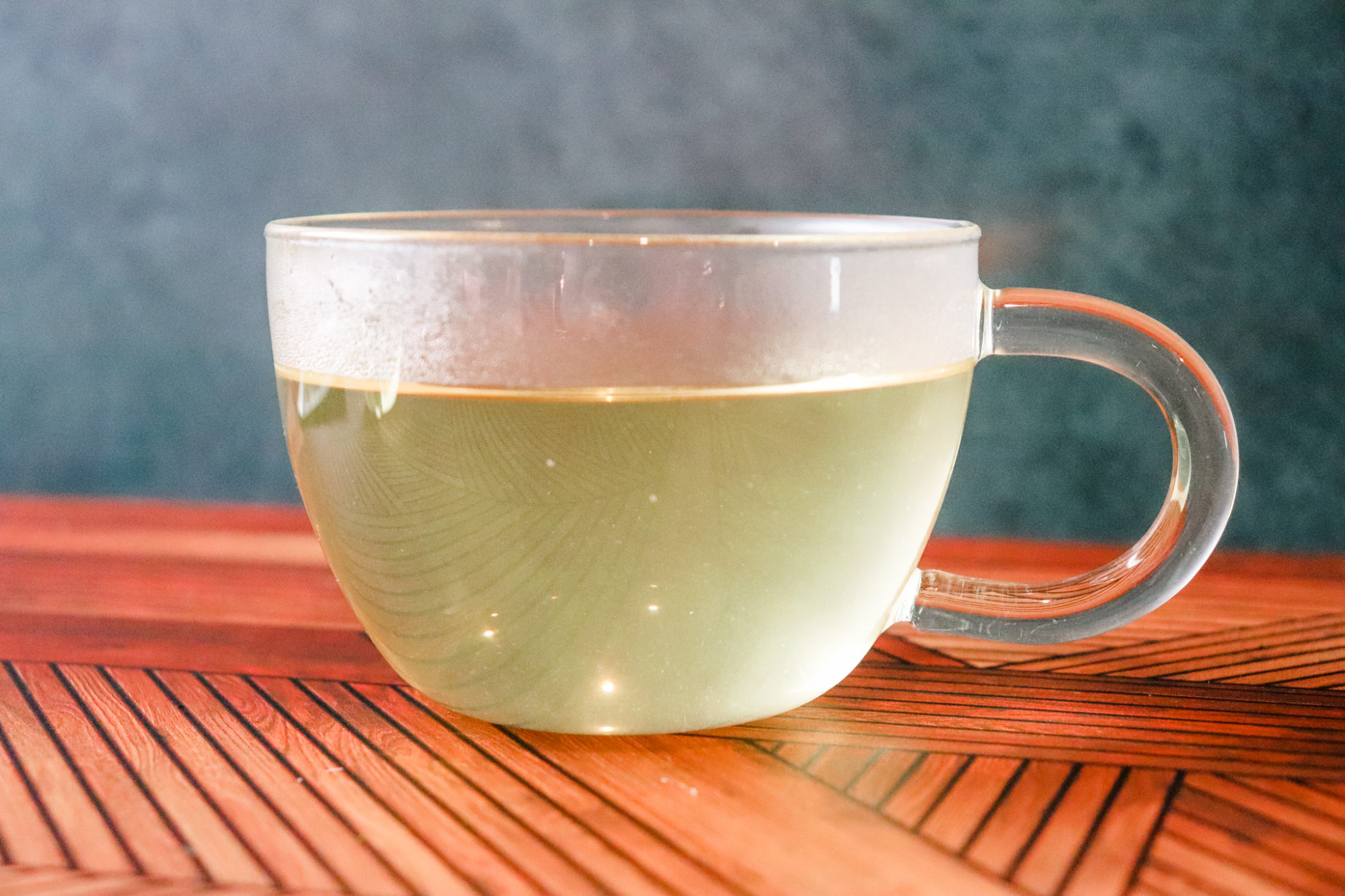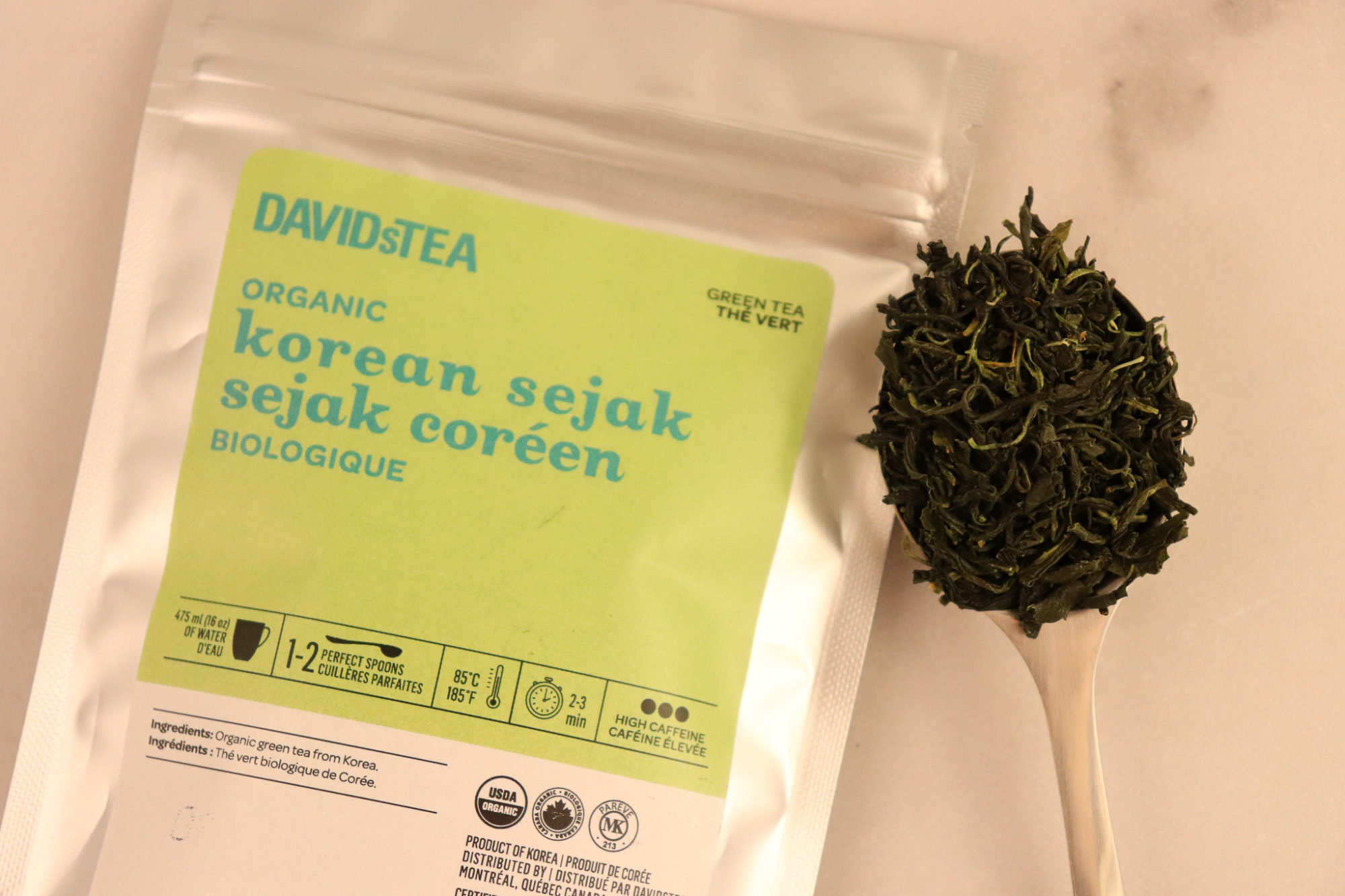I have been enjoying DAVIDsTEA’s Garden to Cup collection lately. It is a premium collection of rare and innovative teas from the world’s greatest gardens, selected exclusively by their tea experts. My tea-filled heart is happy to see a prominent company introducing single-origin specialty teas to a wider audience. I was even more excited to see Organic Korean Sejak featured in the spring subscription box that they recently shared with me. Korean teas are seriously underappreciated! In this post, I’ll be taking a deeper look at this special offering.
Thank you to DAVIDsTEA for sponsoring this blog post! I am a longtime fan of what they do so this is pretty much a dream collaboration for me. Sponsored posts like this one help me cover hosting fees and other expenses for running this blog.
What Is Sejak?
Nokcha is the Korean term for green tea. The most common type is jakseol (or sparrow’s tongue). The tea is then further categorized by the time of year that the leaves are harvested. Woojeon is the name given to the first spring harvest, taking place before April 20th. Much like Japanese shincha, this tea is prized but the freshness is fleeting.
Sejak refers to the second flush that is picked after April 20th and before May 5th or 6th. The conclusion of this harvest period marks the beginning of summer in the traditional agrarian calendar. The plucking standard for sejak usually consists of an unopened bud and one to two newly opened leaves.

Origin and Processing
DAVIDsTEA’s Organic Korean Sejak hails from Jeju Island, located off the southern coast of South Korea. This growing region has a temperate climate and rich volcanic soil. Tea plants thrive in acidic soil so you will often find good tea where there are volcanos. Hallasan Mountain is dormant and has been designated as a national park. It is a popular tourist destination. Korea has a long history of growing tea, but Jeju Island is one of its youngest production areas.
This tea was harvested by hand in late April and was made using the Yabukita, Geumgokrok, and Hyeopsanhyang cultivars. Organic Korean Sejak is unique in that the leaves were both steamed and roasted as part of the fixing step during processing. This gives it a taste that is akin to both Chinese and Japanese green teas. Keep reading for my detailed tasting notes!

In the Cup
The dry leaves of this tea were a beautiful dark shade of green. They had a twisted, somewhat irregular appearance with a sweet vegetal aroma. I prepared this tea using the glass bubble teapot from DAVIDsTEA. The stainless steel infuser basket made it easy to remove the tea leaves at the appropriate time. My water temperature was 185℉ with an infusion time of 2-3 minutes. Sejak isn’t an overly delicate tea so you can feel free to adjust those parameters to your taste. Like most green teas, cooler water will help to limit the extraction of bitter compounds.

Organic Korean Sejak brewed up a pale greenish-gold liquor. The first thing I noticed was a savory soup-like quality. This is where the steaming from the processing comes in. Notes of tender vegetables danced around a barely-there floral hint. The overall effect was herbaceous yet balanced. It had a nutty and sweet finish that reminded me a bit of dragonwell. There was some astringency, but it didn’t get bitter at all. The aftertaste lingered in a lovely way after each sip.
This tea was just as delicious when made as an iced tea. I loved the smoothness that resulted from cold brewing. To give it a try, just place the tea into an air-tight pitcher of cold water and put it in the refrigerator for at least 8 hours. There’s no ice needed since it will already be at the perfect drinking temperature. Serve the tea in stemmed glasses instead of teacups for an extra fancy touch!
If you’re new to Korean green teas, this one is a perfect introduction. It has become my go-to for an afternoon pick me up so I’ll need to pick up more soon.

Q&A with DAVIDsTEA
Q: What makes teas from Jeju Island so special?
A: Jeju Island is one of Korea’s most renowned terroirs. The shaded volcanic soils are quite nutrient rich, offering a superb habitat for Camellia sinensis. Being located on an island, the garden is surrounded by the sea, which provides a delightful oceanic note to the tea.
Traditionally, green teas are either steamed or pan-fired, two processing techniques that create very distinctive flavors. This tea is both steamed and roasted, offering a unique duality of nutty and fresh vegetal notes.
Q: What was the process of sourcing Organic Korean Sejak like? Was it difficult to find a supplier?
A: Garden to Cup is how we express our passion for exploring the pure taste of the leaf and where it comes from. Through sustainable sourcing & partnering with tea growing communities around the world, we celebrate their harvest through the teas we bring to you.
We are constantly grateful for the tea community at large and the ways in which it brings us into contact with unique tea growers throughout the world. Thanks to this diverse network, we obtained samples and began to work with this exceptional tea garden, which was originally founded in 1984. Once our team tasted their tea we knew we had to offer it to our tea communitea!
Q: How does this tea differ from the sejak that DAVIDsTEA carried previously?
A: This sejak comes from a garden in the western part of the region of Seogwipo-si, which is in the south of Jeju Island. Our previous sejak came from Hallasan, which is closer to the centre of the island. While our previous sejak was unusual in its earthy notes of root vegetables, our current sejak balances both nutty and vegetal notes, reminiscent of green herbs and fresh bamboo.
Hand-picked in late April, our current sejak is made with Yabukita, Geumgokrok and Hyeopsanhyang tea cultivars, for an easy to steep cup with a lasting and complex flavour.
Q: How do teas like this one help to support the Ethical Tea Partnership?
A: As a proud member of the Ethical Tea Partnership, all our Camellia sinensis teas support the ETP’s efforts to create a fairer, more sustainable tea industry for tea workers & farmers, their families and the environment.
I hope that you’ve enjoyed taking a deeper dive into this special tea with me. It was fun to try a different style of tea review. Have you ever tried Organic Korean Sejak from DAVIDsTEA? I’d love to hear your thoughts in the comments below!
This post was sponsored by DAVIDsTEA. Opinions are my own.

